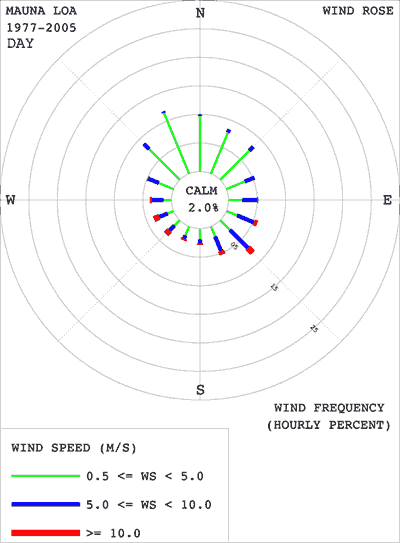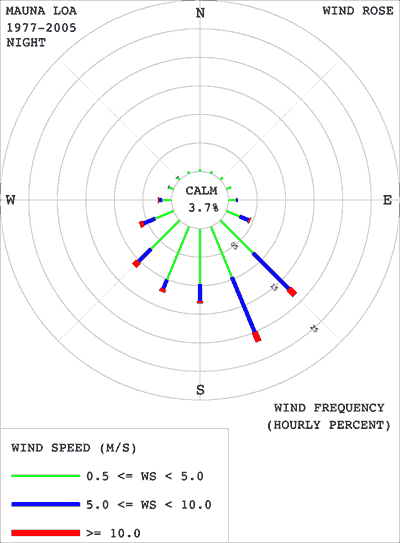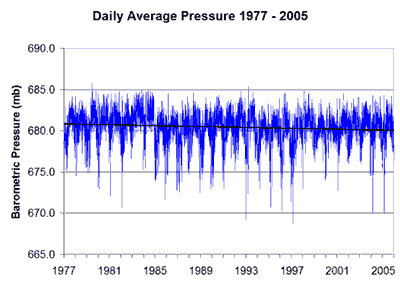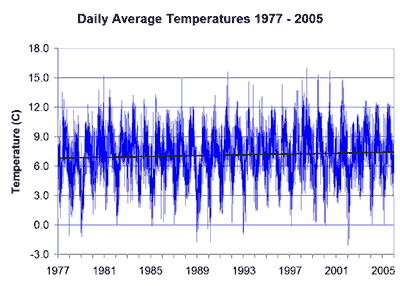
Measurements at the Mauna Loa Observatory stopped after the 2022 eruption of the Mauna Loa volcano, when lava flow crossed the access road and took out power lines to the facility. The observatory remains inaccessible by vehicle and without power from the local utility company.
Observatory staff has established limited solar power in four observatory buildings and restored approximately 33 percent of the measurements onsite, including the Global Monitoring Laboratory and Scripps critical CO2 records and other atmospheric measurements.
Media can contact: Theo Stein (303) 819-7409 (theo.stein@noaa.gov) or Karin Vergoth 303-632-6413 (karin.vergoth@noaa.gov)
 National Oceanic and
Atmospheric Administration (NOAA),
National Oceanic and
Atmospheric Administration (NOAA),
Earth System Research Laboratory (ESRL)
The ESRL GMD Meteorology program measures ambient and dewpoint temperatures, relative humidity, precipitation (in inches), and wind speed and direction.
The dewpoint hygrothermometer measures ambient and dewpoint temperatures, from which relative humidity is calculated. Precipitation is continuously measured (in inches) with a tipping bucket.
A Mauna Loa PC based system utilizes RS-485 serial communications to collect data from the instruments. The data is recorded as one minute averages, except for precipitation. Precipitation is measured as a daily total accummulation.
| Measurement | Instruments | Frequency |
|---|---|---|
| Air Temperature | Aspirated thermistor, 2m, 9m, 37mm heights | continuous |
| Air Temperature | Max/Min thermometers, 2-m height | daily |
| Temperature gradient | Aspirated thermistor, 2m, 9m, 37m heights | continuous |
| Dew point temperature | Dew point hygrometer, 2m height | continuous |
| Relative Humidity | TSL 2m height | continuous |
| Pressure | Capacitance Transducer | continuous |
| Pressure | Mercurial barometer | 5/week |
| Wind (speed and direction) | 10m, and 38m heights | continuous |
In order to monitor the trends in meteorological parameters, and to assist in the interpretation of other parameters such as aerosols.
Day rose and night rose (below) show the wind direction at the observatory. Note that the night rose shows
only the southerly component which is the desired downslope conditions.


MLO press and MLO temps (below) is the running record since 1977. There is a slightly increasing trend in the
ambient temperature since 1977.


It allows us to see how changes in other atmospheric variables affect the meteorology of the station.
Thomas Mefford
303-497-6051
Matthew Martinsen
808-933-6965(x223)
Paul Fukumura
808-933-6965 (x223)
http://www.esrl.noaa.gov/
gmd/dv/met/mlo.html
1977